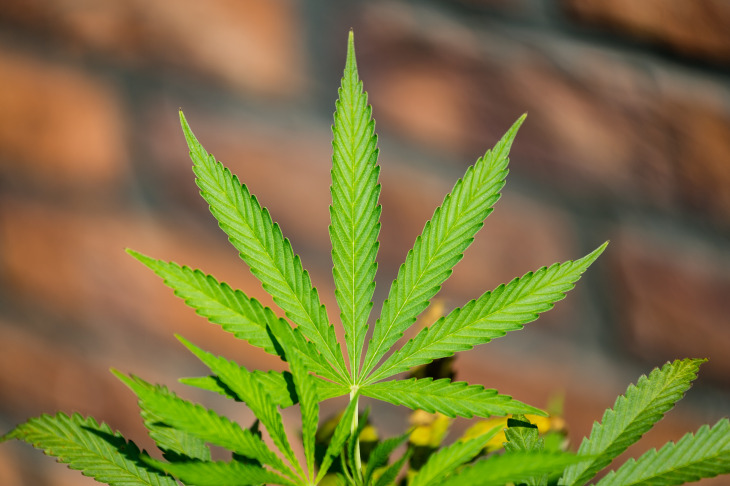
Marijuana is having something of a moment in America. The once widely-demonized substance has found itself on ballots all over the country, becoming decriminalized, approved for medicinal purposes, or flat-out legalized in a steadily growing number of states in recent years.
It is now the second-most used psychoactive substance in America, just behind alcohol.1
But despite its increasing acceptance and the emerging science on the subject identifying some potential benefits of using marijuana (in moderation), it remains a habit-forming drug, and addiction to anything, even weed, is not suitable for anyone.
Legalization of Marijuana: Timeline
Before we talk about the impact of legal marijuana on the addiction treatment landscape, it might help to understand a bit of the history of pot’s rise to prominence and where the substance is, or isn’t, still considered illegal.
1937
Controlling the distribution of marijuana was a federal priority back in the 1930s when the country passed its first nation-wide law dealing with the substance. The Marihuana Tax Act, enacted in 1937, prohibited the use of the plant for nearly all purposes. (A small allowance was made for medicinal use, but it came with such hefty fees and bureaucratic complications, it was hardly ever utilized.)2
1969-1970
The Marijuana Tax Act was struck down in a 1969 Supreme Court case, but it was replaced the following year with an even stronger bill, the Controlled Substances Act. This classified marijuana as a Schedule 1 drug, considered the most dangerous by the federal government and controlled the most strictly. Weed was outlawed everywhere, for every use.
1973
Grassroots efforts (no pun intended) pushed for the drug’s decriminalization then, meaning that a possession charge would lead to a fine but not jail time. Of all surprising places, Texas was the first to enact such a law, reducing marijuana possession of four ounces or less to a misdemeanor back in 1973.2
1996
The next wave to hit the marijuana movement was the push for medicinal marijuana, which started in California in 1996.
Where Is Marijuana Legal?
A medicinal (or even decriminalized) status for the plant is where many states still rest today. Yet many others have taken things one step further, offering the substance up for sale to anyone 21 or older, regardless of their health condition.
The legal marijuana states, including places where weed is legal either medicinally or recreationally, now total 36, with the District of Colombia and Puerto Rico jumping in for good measure.
All told, that list of marijuana-legal states—and their illegal counterparts—include the following (as of January 2021).2
States/Territories Allowing Recreational Use (Legalized Marijuana)
- Alaska
- Arizona
- California
- Colorado
- District of Columbia
- Illinois
- Maine
- Massachusetts
- Michigan
- Montana
- Nevada
- New Jersey
- Oregon
- South Dakota
- Vermont
- Washington State
States/Territories Allowing Medicinal Use
- Arkansas
- Connecticut
- Delaware
- Florida
- Hawaii
- Louisiana
- Maryland
- Minnesota
- Mississippi
- Missouri
- New Hampshire
- New Mexico
- New York
- North Dakota
- Ohio
- Oklahoma
- Pennsylvania
- Puerto Rico
- Rhode Island
- Utah
- West Virginia
States Where Weed Is Still Illegal
- Alabama
- Georgia*
- Idaho
- Indiana*
- Iowa*
- Kansas
- Kentucky*
- Nebraska
- North Carolina
- South Carolina
- Tennessee
- Texas*
- Virginia*
- Wisconsin*
- Wyoming
*Except for medicinal CBD Oil8
The Ripple Effect of Legalization
The relatively rapid acceptance of marijuana has resulted in several profound societal impacts, from economic to cultural. But has the legalization of weed also made an impact on the need for addiction treatment?
The answer is not nearly as straightforward as the question.
The concept of legal marijuana is still relatively new, and with more states joining the recreational bandwagon every year, data is nearly continually changing.
One study found that in the earliest states to adopt recreational marijuana, the change in legal status had “minimal impact” on marijuana use and potentially related statistics, such as alcohol use and crime.3 (This may be due to a whole host of reasons, not least of which being that, in most of these areas, marijuana possession persecutions were most likely already pretty lax.)
Another study, conducted by Temple University and released last year, seems to complement this concept. The school’s research team found that the admission rate for cannabis use disorder fell between 2008 and 2017, both nationally and in Colorado and Washington (the pioneer states).4 (The reduction was small but statistically noticeable.)
Still, if the first survey rings true and the same basic number of people are using marijuana, then reducing people seeking treatment for cannabis use disorder doesn’t necessarily speak to fewer addiction cases.
The seeming inconsistency likely has many complicated, interlocking causes. It may merely mean that marijuana use has become widely accepted, with fewer people feeling compelled to seek treatment for using a now-legal substance. It could also have more concrete legal backing. Legal-ordered cases of treatment for cannabis use disorder may well have been on the wane with legalization on the rise.
Illustrating just how complicated the relationship between legal marijuana and admissions for cannabis use disorder could be is yet another study examining the marijuana habits of pregnant women between 2002 and 2014.5
The study found that the legalization of marijuana seemed to correlate to an increased number of pregnant women seeking addiction treatment for the substance over that period, at an average increase of nearly 5%. (This also correlated to a rise in treatment admissions for alcohol use disorder by pregnant women over the same period. According to the survey, marijuana use among pregnant women rose by 62% between 2002 and 2014.)5
Indeed, the results seem to offer a small contradiction to the findings of the previous two reports.
In such an emerging field, inconsistencies and statistical curiosities are indeed not rare. Still, time-tested studies are outlining the impact of marijuana use, especially on younger users.
Living In A Legalized World
As with alcohol, just because weed is legal and can be enjoyed safely by many people, it doesn’t mean it’s completely harmless.
One of the oldest critiques on marijuana is that it’s a “gateway drug“: a substance whose use puts people in the behavioral patterns and in the company of addicts, making it easier to move on from the drug to heavier, more dangerous fare.
Several studies have upheld parts of this theory, finding that marijuana usage was indicative of later development of alcohol use disorder in some people.6 The drug could also “prime” the brain for enhanced responses to other drugs, making the user that much more susceptible to addiction.6
Additional problems can occur depending on the age of the user also. Prolonged use of marijuana before age 16 can lead to significant health problems, including:
- Impaired cognitive function
- Increased risk of engaging in risky behaviors
- Social impacts, like the increased likelihood of dropping out of school
Teen users are also much more likely to become addicted to weed than those who first try the substance when they’re older. One study pegs the numbers at a 9% chance of becoming addicted for adults and a 16% chance for teenagers. The same study also found that daily marijuana usage, no matter at what age, results in a 50% addiction rate.7
Though it’s widely thought to be more gentle on our bodies than hard drugs or even alcohol, marijuana can still have a slew of un-fun physical effects, including:7
- Increased risk of certain cancers
- Increased risk for developing asthma or chronic bronchitis
- Decreased testosterone levels in men
- Increased testosterone levels in women
- Infertility and other symptoms of physical dependence
With its legal status putting it front and center in the national conversation, there is a fresh eye on all of marijuana’s potential upsides and downsides. As always, it’s best to be mindful when consuming (legal) mind-altering substances of any type and keep things in moderation
If you think you or a loved one may have a problem with cannabis use disorder, call
800-681-1058
(Who Answers?)
for more information and rehab options.
References
- Silvermist Recovery. (2017). Legalizing Marijuana and Addiction Rates in U.S. Retrieved 2021.
- Wikipedia. (2021). Timeline of cannabis laws in the United States. Retrieved 2021.
- Recovery Ways. (2018). Has Marijuana Legalization Led To More Addiction? Retrieved 2021.
- Aldin, B. (2020). Youth Marijuana Treatment Admissions Fell After Legalization, Study Finds. Marijuana Moment. Retrieved 2021.
- Meinhofer, A., Witman, A., Murphy, S. M., and Bao, Y. (2019). Medical marijuana laws are associated with increases in substance use treatment admissions by pregnant women. Addiction, 114: 1593– 1601.
- National Institute on Drug Abuse. (2020). Marijuana Research Report: Is marijuana a gateway drug? Retrieved 2021.
- Gateway Foundation. (2019). Dangers of Cannabis Legalization for Recovery. Retrieved 2021.
- DISA Global Solutions. (n.d.). Map of Marijuana Legality by State. Retrieved 2021.

